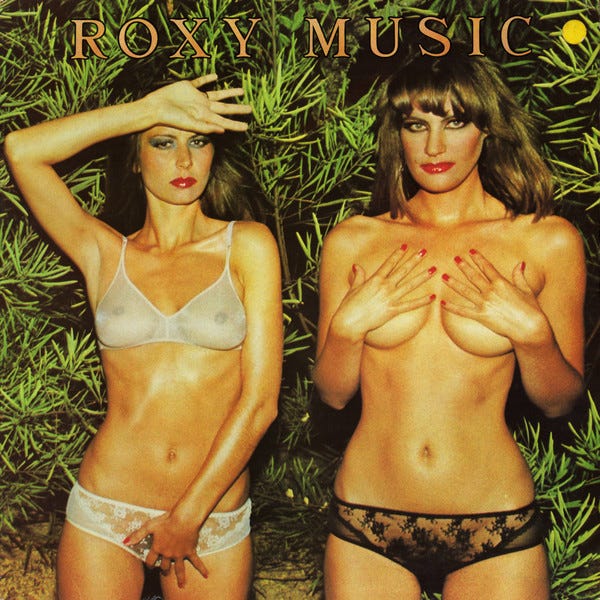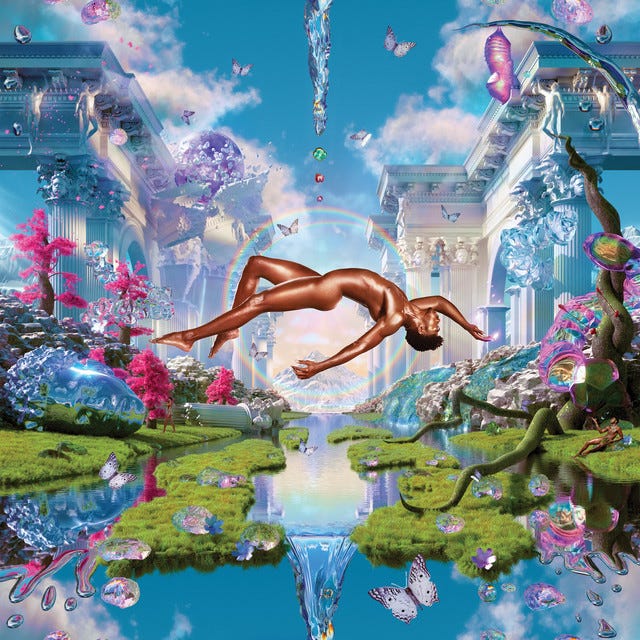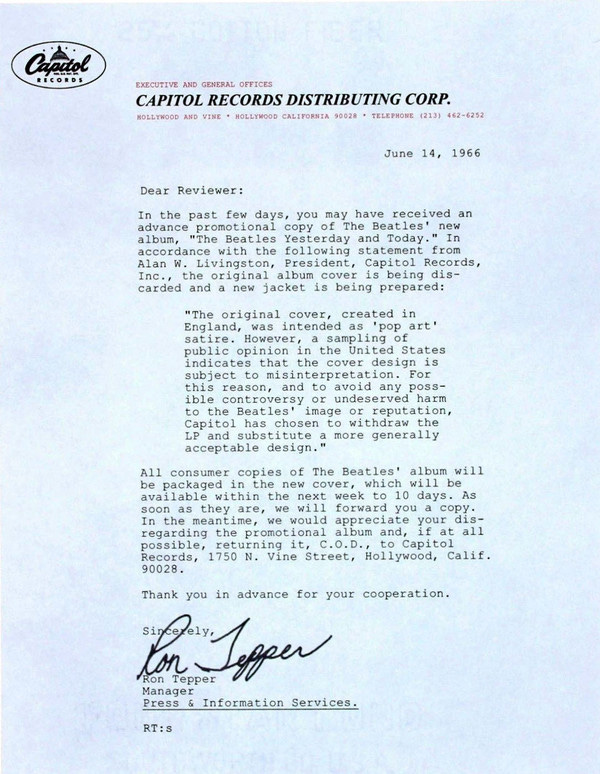Sex Usually Sells But Not for These Censored Album Covers
NSFW depending on you level of socio-political and religious values.
A week ago I wandered into Reckless Records on Berwick St. in London’s Soho. Within two minutes of flipping through the bins, I came across a 1968 original UK pressing of Jimi Hendrix’s Electric Ladyland. I had finally found one of my favorite vinyl. Besides the album being Hendrix’s last before his sudden death, the infamous dispute around the cover is the perfect combination of scandalous history wrapped in a full-bleed cover.

The album art was directed by Hendrix’s UK label, who sent photographer David Montgomery to a speakeasy to create the cover. Not only did Hendrix not approve of this cover, it never made it to US soil due to the sordid imagery at the time: 19 nude women lying gracefully across a black background. In a letter to his label, Reprise, Hendrix apologized for the delay in sending his thoughts on the album art and carefully detailed on hotel stationery how he envisioned a photo of the band sitting on the Alice and Wonderland statue in Central Park, taken by Linda (McCartney) Eastman, to grace the cover. It wasn’t until three years ago, that his wish was granted on the 50th anniversary of the album’s release.
The history of censorship harkens back to the beginning of human thought and opinion. As stated in HuffPost, motivations for censorship have ranged from political, to social and religious. Artworks from Michelangelo’s Sistine Chapel to many iterations of the Odalisque, to Gustave Courbet’s “The Origin of the World” have drawn dismay from the art world due to their repeated use of nudity, most notably the bare female body.
Back within the bins of Reckless Records, a rack or two away from Electric Ladyland, sat a repress of English supergroup Blind Faith’s equally scandalous 1969 eponymous album. The cover depicts a portrait of a young topless girl holding a chrome airplane collaged against a scene of a blue sky and green field. The controversy finds itself again surrounding a naked female figure, this time a minor holding what could be seen as a phallic object. While the scandal is clear when laid out in basic terms, this was not the original intention of cover artist Bob Seidemann. His original idea was to symbolize the idea of human achievement through the symbols of youth, innocence, and technology. The cover was later replaced by a group photo of the band.

When it comes to censoring artwork, policing women’s bodies has long come in tow. In 2002, Christina Aguilera’s released her fourth studio LP Stripped. The album cover shows the singer prominently standing in the center of the frame, donning only a pair of bell-bottom jeans. Her long hair subs as a top, leaving her torso bare. She is as the album notes, stripped. One of the top pop stars of the time, the album was released worldwide. But in Saudi Arabia, the cover was censored, with a long black sleeve shirt and maxi skirt perfectly photoshopped onto Christina’s same stance. Even the insert photos were edited to hide the singer’s body. Just like Electric Ladyland was modified to fit the US’ standards of modesty, Stripped followed Saudi Arabia’s.

But now in 2021, in the “progressive” digital world of streaming services, artist Lil Nas X has challenged the boundaries of what the mainstream, even in conservative countries, deems acceptable with his debut album, MONTERO. Never has the music industry seen a young gay black man take hold of his identity so strongly through both music and visuals. From the lyrics to his music videos to the cover art, which depicts the singer elegantly floating over a futuristic Garden of Eden-esque landscape in the nude, Lil Nas X has fiercely inserted himself into the conversation of how the human body has been visualized throughout art history.
After the rapper’s single “MONTERO (Call Me By Your Name)” was released back in April, it reached #1 on Apple Music’s “Top 100: Saudi Arabia” playlist according to Them. In a country where identifying as homosexual is still illegal and punishable by death, it goes to show that self-expression is harder to censor within the digital age.
Below are a few more covers that have been censored throughout the years:




I’m looking for The Art of Cover Art to be a free educational and inspirational source since there is little documentation on the art history of album art. But, if you have $5/ month to spare, it would be super helpful in furthering my research. Or if you think a friend might enjoy this newsletter, the best way to pay it forward is by sharing!







